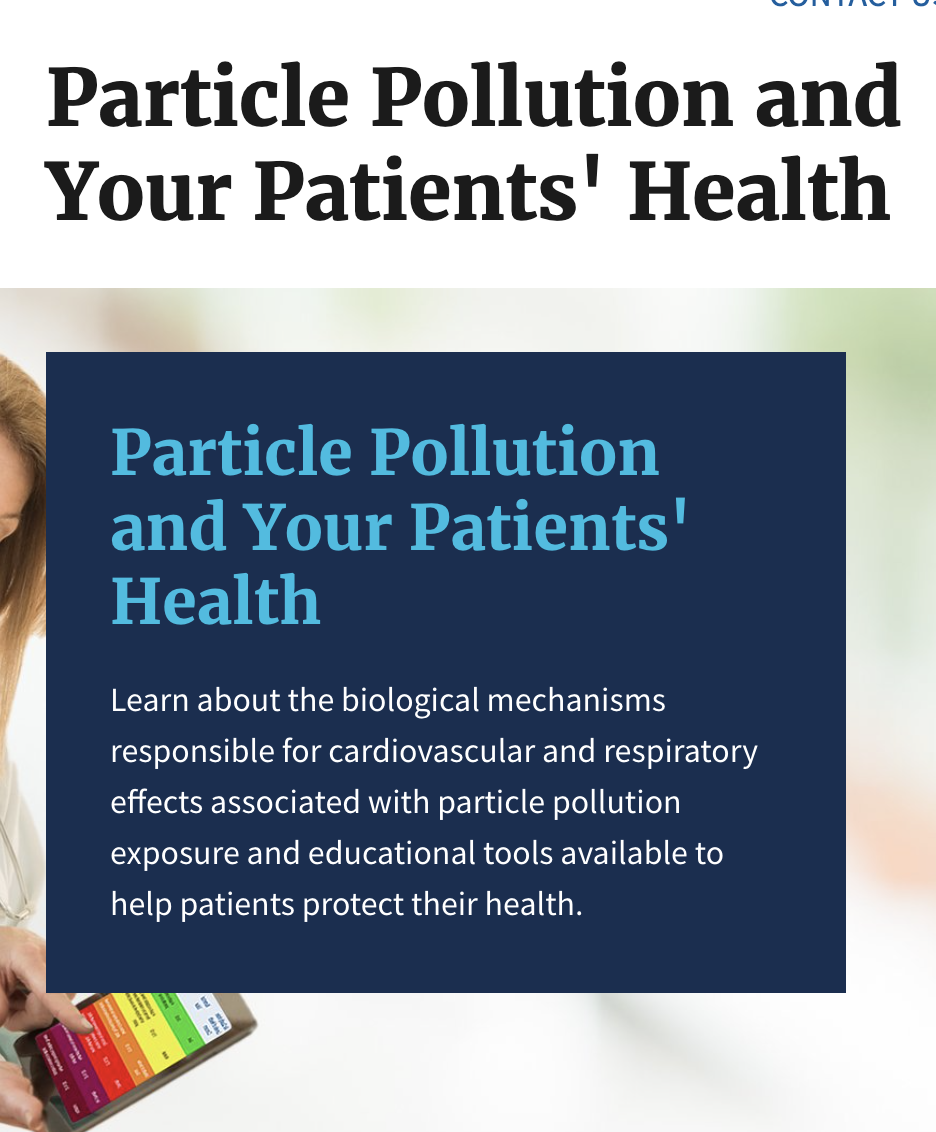Particle pollution, also known as particulate matter or PM, is the main component of haze, smoke, and dust. An extensive body of scientific evidence shows exposure to ambient particles can cause adverse cardiovascular effects and premature death and is likely to cause respiratory effects. People with heart or lung diseases, children (less than 18 years old), older adults, people with diabetes, and people of lower socioeconomic status (SES) are the most likely to be affected by particle pollution exposure.
An easy way physicians and other health professionals can help reduce risk from exposure is through patient education. The simple steps of advising patients to check the air quality daily, and informing them of ways to minimize exposure to particle pollution, can help reduce overall risk of particle pollution-related health effects, particularly in individuals with heart and lung disease. The Air Quality Index (AQI) lets patients know when it’s a good idea to switch up outdoor activities to reduce the amount of pollution exposure. Note that this patient education is consistent with the recommendations of an expert panel that authored the American Heart Association’s scientific statement on “Air Pollution and Cardiovascular Disease.”
